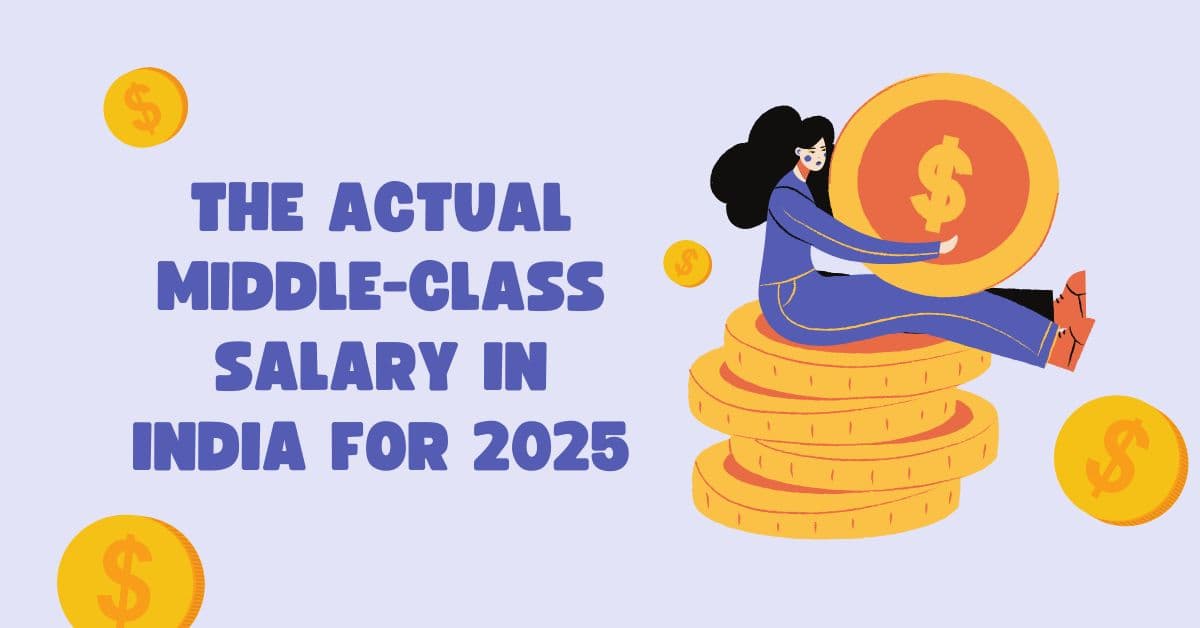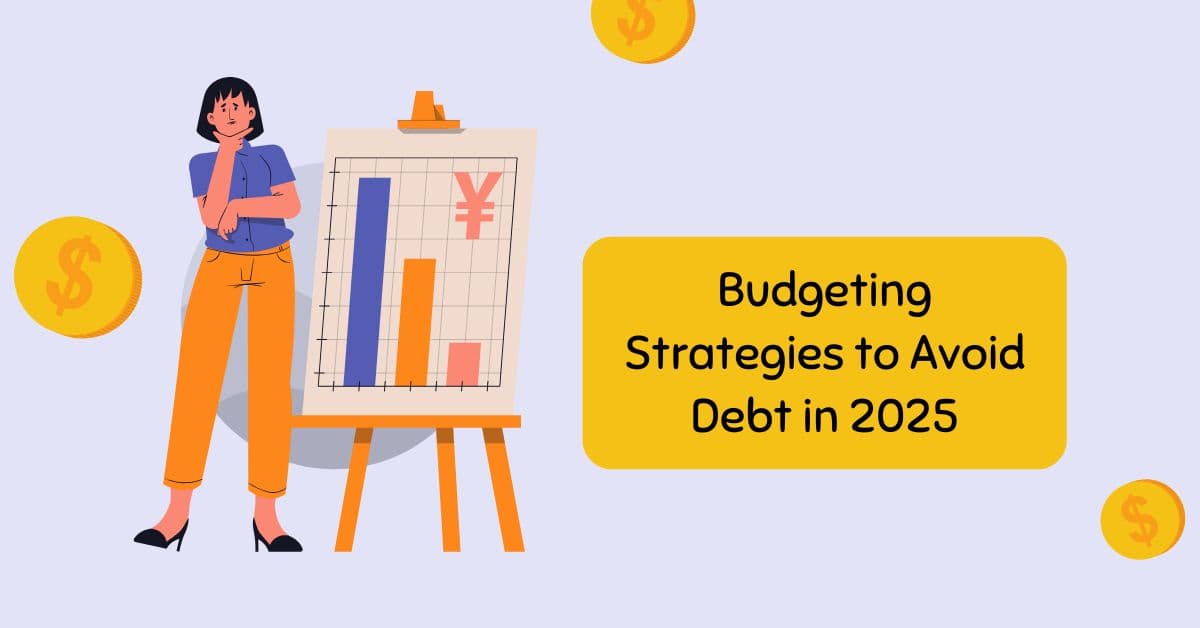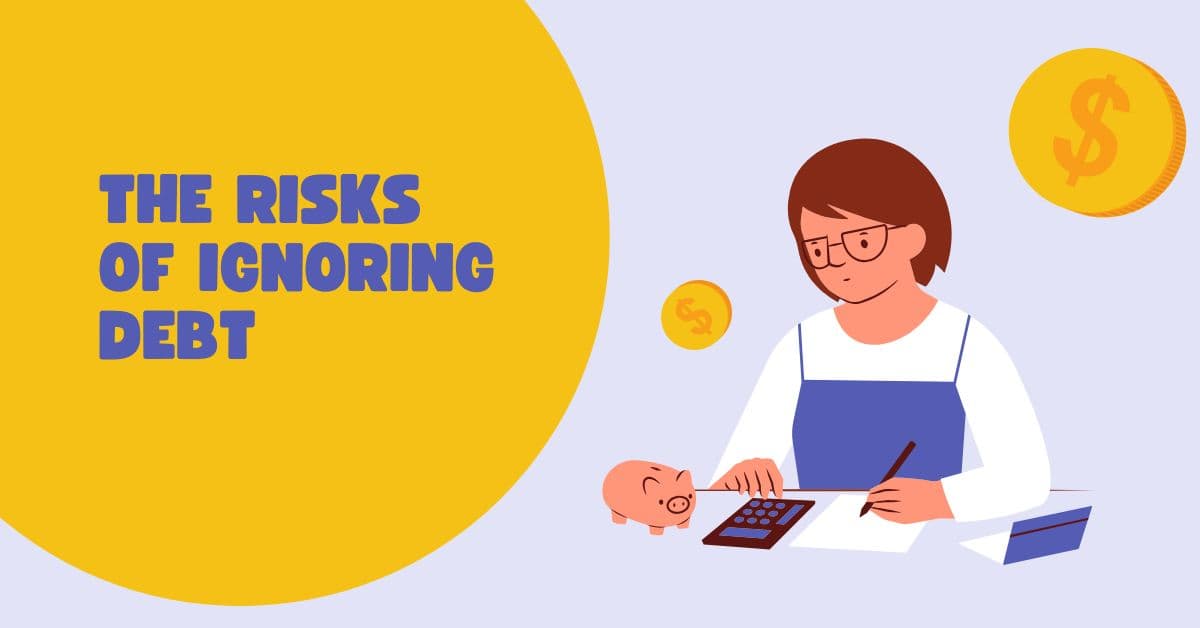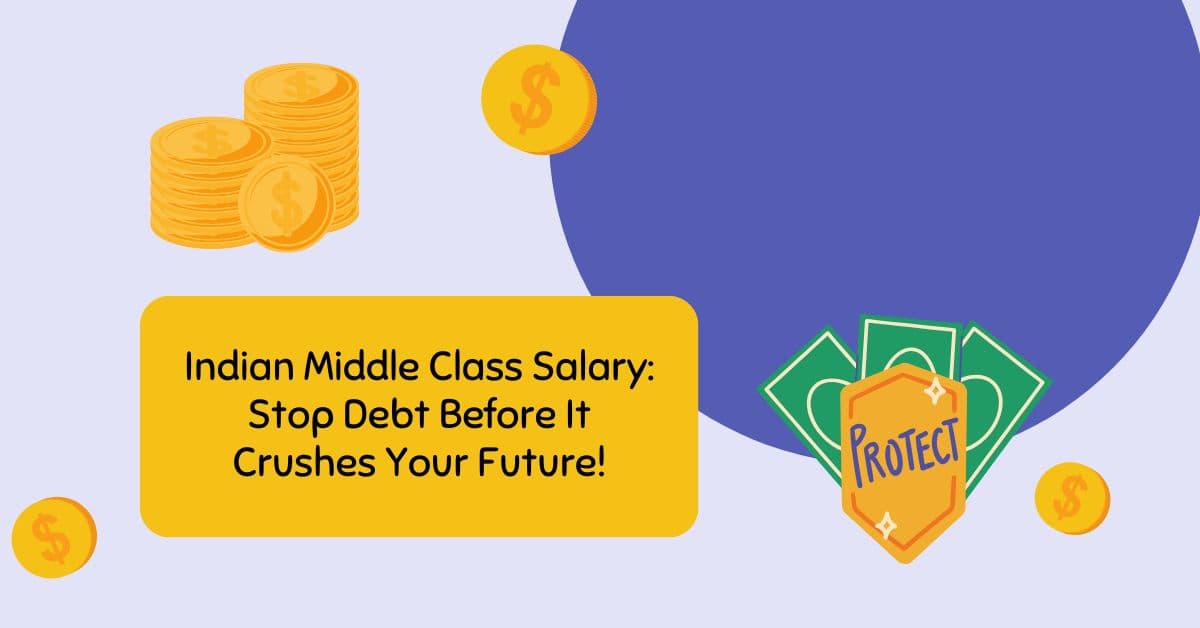Indian Middle Class Salary: The middle class in India, which makes between ₹5 and ₹20 lakh a year, would have to walk a tightrope financially in 2025. With over 100 crore UPI users, 2 crore demat accounts, and a $5 trillion economy aim by 2030, middle-class households in Tier-2 cities like Patna and metro areas (rent: ₹15,000–₹30,000) struggle with mounting debt—40% have personal, auto, and home loans, and 20% have credit card balances over ₹50,000, according to the RBI. As earnings stagnate versus rising expenditures, EMIs (₹20,000–₹50,000) and inflation (4-6%) threaten objectives like retirement or education (₹5–15 lakh). According to ET Wealth, 60% of the typical middle-class wage (₹6–12 lakh in metro areas and ₹3–7 lakh in Tier-2) is spent on necessities and EMIs.
In order to prevent debt from ruining your future, this article examines 2025 income patterns, debt traps, and practical budgeting techniques. It equips young couples, families, and salaried professionals in Mumbai, Delhi, or rural Uttar Pradesh with useful tools, community guidance, and insights unique to India, enabling them to manage their money, pay off debt, and accumulate wealth.
The Actual Middle-Class Salary in India for 2025
According to Forbes India, the middle class in India, which makes up over 30% of the country’s 1.4 billion inhabitants (420 million), drives consumption but also experiences financial hardship. The following are important wage trends for 2025:

Pay Range:
- According to Glassdoor, metros (Mumbai, Delhi): ₹6–12 lakh annually (₹50,000–₹1 lakh monthly).
- Tier 2: ₹3–7 lakh annually (₹25,000–₹58,000/month) (Patna, Jaipur).
- According to TeamLease, Tier-3/Rural: ₹2–5 lakh/year (₹15,000–₹40,000/month).
Sectors:
- According to Indeed, IT/Tech: ₹8–20 lakh (Bangalore, Hyderabad).
- Banking: 6 to 15 lakh rupees (Delhi, Mumbai).
- According to PayScale, manufacturing/teaching: ₹3–8 lakh (Tier-2/3).
Costs:
- Rent: ₹8,000 to ₹15,000 (Tier-2), ₹15,000 to ₹30,000 (Metros).
- EMIs: ₹20,000 to ₹50,000 for auto and housing loans.
- ₹10,000 to ₹20,000 for groceries and school fees, according to ClearTax.
Burden of Debt:
- According to Bajaj Finance, home loans range from ₹20 to ₹50 lakh, with EMIs of ₹20,000 to ₹50,000 (8–9% percent).
- According to the RBI, credit cards have an average amount of ₹50,000 at 36–48% interest.
- Personal Loans: according to Paisabazaar, ₹5–10 lakh for weddings and medical expenses.
Context: According to Economic Times, middle-class households in Gujarat, Uttar Pradesh, and the metro areas utilise UPI applications (Paytm, GPay) for spending yet suffer with debt, with ₹6.81 lakh crore in digital transactions and 17,000+ SBI branches. According to NIMHANS, 60% of people experience financial stress as a result of loans, which might cause their CIBIL score to decline (average: 750 to below 600).
Why Take Action Now? Unchecked debt can rise rapidly; according to Paisabazaar, a credit card debt of ₹50,000 with 40% interest can increase to ₹74,000 in a year. Savings for retirement or weddings (₹10–20 lakh) are preserved when early action is taken.
Why the Middle Class Is Being Crushed by Debt
According to ET Wealth, cheap credit, stagnating wages, and lifestyle inflation are the main causes of debt traps.
High EMIs:
- According to Bajaj Finance, 50–60% of income is spent on home loans (₹20–50 lakh) and auto loans (₹5–10 lakh).
- For instance, a house loan of ₹30 lakh at an interest rate of 8.5% for 20 years (or ₹26,000 a month) would stretch ₹50,000 in salaries.
Traps using Credit Cards:
- Per the RBI, 20% of middle-class households have balances of at least ₹50,000 at interest rates ranging from 36 to 48%.
- For instance, according to ClearTax, ₹50,000 at 40% increases to ₹1 lakh in two years if left unpaid.
Individual Loans:
- With 12–15% interest, it may be used for weddings (₹10–20 lakh), medical emergencies (₹5–10 lakh), or schooling, according to Paisabazaar.
- For instance, an EMI of ₹11,122 per month at 12% for five years on a loan of ₹5 lakh.
Inflation of Lifestyle:
- According to Forbes India, spending between ₹5,000 and ₹15,000 a month on electronics, vacation, or food contributes to debt.
- According to Business Standard, 70% of millennials replace their phones every year, frequently using credit.
Salary stagnation:
- According to TeamLease, salary increases (5–8%) behind both loan interest (8–48%) and inflation (4–6%).
- For instance, an income of ₹50,000 per month increases to ₹54,000 (8%) but is subject to ₹26,000 in EMIs, leaving little money for savings.
Context: According to AMFI, middle-class households in Bangalore and rural Bihar manage EMIs and school fees (₹1–2 lakh/year) using 2 crore+ SIP accounts, depending on SBI offices and Hindi fintech applications like Groww.
Budgeting Strategies to Avoid Debt in 2025
Take charge with these easy-to-learn debt management and future protection techniques designed for middle-class budgets (₹25,000–₹1 lakh/month):

1. Evaluate Your Income and Debt
- How: Make a list of all your monthly EMIs and bills, including credit cards, personal loans, and house loans. Contrast with income (in metro areas, ₹50,000 per month).
- For instance, the monthly payments for a home loan (₹26,000), auto loan (₹10,000), and credit card (₹5,000) equal ₹41,000. Income: ₹50,000, leaving ₹9,000 for savings and other costs.
- As advised by Forbes India, use ClearTax’s Debt Calculator to rank high-interest debt in order of priority (credit cards > personal loans > house loans).
Context: According to ClearTax, professionals in Mumbai who make between ₹6 and ₹12 lakh annually use ZeeMoney for budgeting.
2. Adhere to the Budget Rule of 50/30/20
- Rent (₹15,000), EMIs (₹26,000), and food (₹10,000) add up to 50% of needs, or ₹51,000.
- 30% of the wants are travel (₹15,000), dining, and OTT.
- 20% Repayment of Debt and Savings: ₹10,000 (₹5,000 emergency fund, ₹5,000 credit card).
Example Plan (Monthly Salary: ₹50,000):
- ₹25,000 is needed for groceries, utilities, and rent.
- Desires: ₹15,000 (lifestyle, reduced to ₹10,000 to accelerate debt payback).
- ₹10,000 in savings (₹2,000 emergency fund, ₹3,000 FD at 7%, and ₹5,000 credit card).
- Result: Saves ₹36,000 in FDs and pays off ₹50,000 in credit card debt in 11 months, according to Paisabazaar.
According to Economic Times, use Moneycontrol’s Budget Planner to keep tabs on your spending.
Context: According to RBI, families in Patna (earning between ₹3 and ₹7 lakh annually) utilise UPI applications to cut down on monthly eating expenses of ₹5,000.
3. Use the Avalanche Method to address high-interest debt first
- How: Pay the minimum amount due on all obligations, then more on the debt with the highest interest rate (e.g., home loan at 8.5% vs. credit card at 40%).
- For instance, a ₹5 lakh auto loan with 8% interest and a ₹50,000 credit card with 40% interest. Pay a minimum of ₹5,000 on your card, ₹10,000 on your automobile, and then an additional ₹5,000 on your card to pay it off in six months and avoid paying ₹20,000 in interest.
- According to ET Wealth, make a plan using BankBazaar’s Debt Repayment Calculator.
Context: According to AMFI, young couples in Hyderabad (earning between ₹5 and 10 lakh annually) prioritise credit cards in order to free up money for SIPs.
4. Discuss terms with lenders
- How: In accordance with RBI standards, ask banks (SBI, HDFC) for loan restructuring (lower EMIs, longer duration) or EMI moratoriums (3–6 months), citing financial difficulty.
- An illustration would be a ₹30,000 house loan with ₹26,000 EMIs that was restructured to ₹20,000 over 25 years, saving ₹6,000 each month.
- Advice: Visit SBI’s 17,000+ branches or send an email to banks via NetBanking, according to Bajaj Finance. For ₹2,000–₹5,000 in legal aid, use Vakilsearch.
Context: According to the RBI, Tier-2 households in Jaipur use PNB’s 7,000+ branches to obtain debt relief.
5. Establish an Emergency Fund
- How: Set aside ₹5,000 to ₹10,000 every month in liquid funds (such the SBI Liquid Fund, which yields a 7% return) to cover ₹1–2 lakh in costs for three to six months.
- For instance: ₹5,000 every month for a year equals ₹60,000, preventing the need for further loans for unforeseen expenses (such as ₹50,000 for medical bills).
- According to Forbes India, for liquid fund SIPs, use Groww.
In the context, the RBI reports that rural families in Uttar Pradesh (savings: ₹5,000/month) utilise SBI branches for FDs.
6. Avoiding New Debt
- How: Use credit cards sparingly, postpone unnecessary expenditures (vacations, gadgets), and save money for unexpected expenses.
- Example: Redirect ₹5,000 per month towards debt payments by forgoing a ₹50,000 phone purchase to avoid 40% interest.
- Business Standard advises using Paytm’s Expense Tracker to reduce impulsive purchases.
Context: ClearTax reports that metro millennials in Delhi reduced their OTT subscriptions (₹1,000/month) in order to save money.
7. Increase Revenue Sources
- How: Retrain on Coursera (data analytics: ₹5,000–₹10,000), instruct on Unacademy (₹500–₹1,000/hour), or work as a freelancer on Upwork (content, coding: ₹2,000–₹5,000/day).
- For instance, working 10 hours a week at ₹2,000 per hour would earn ₹80,000 per month, which would pay debt and EMIs.
- Tip: According to Indeed, 60% of jobs are found on LinkedIn; update your profile.
Context: According to Skill India, professionals in Bangalore upskill through NSDC (free–₹5,000).
8. Protect Your Credit Score
- How: Pay minimal dues on time, stay out of default, and use CRED or Paisabazaar (free) to check your CIBIL scores every month.
- For instance, maintaining a CIBIL above 700 by a minimum payment of ₹5,000 on a ₹50,000 credit card allows for future loans.
- Advice: According to ET Wealth, use BankBazaar to dispute mistakes on CIBIL reports.
Context: According to CIBIL, Mumbai families continue to have house loan scores between ₹50 and ₹80 lakh.
The Risks of Ignoring Debt

- Debt Spiral: according to Paisabazaar, a credit card debt of ₹50,000 at 40% increases to ₹1 lakh in just two years.
- Loan Defaults: According to RBI, late payments result in fines ranging from ₹1,000 to ₹5,000 per month as well as repossession.
- Credit Score Crash: According to CIBIL, defaults cause a decline in CIBIL from 750 to 500, which prevents loans for seven years.
- Financial Stress: According to NIMHANS, 60% of middle-class households report having worry that affects their professions.
- Lost Opportunities: According to Forbes India, debt eats up money, postponing objectives like retirement or schooling (₹5–15 lakh).
Answers:
- To plan your debt, use ClearTax.
- According to Reddit, join r/IndiaInvestments for advice.
- According to ClearTax, consult SEBI-registered advisers through Vakilsearch for ₹2,000 to ₹5,000.
Context: According to the RBI, rural communities in Bihar rely on SBI’s 7,000+ ATMs for cash and require Hindi applications like Angel One.
Resources and Tools
- Budgeting apps: include ZeeMoney for tracking expenses, Moneycontrol, and ClearTax.
- Debt tools: include payback calculators from BankBazaar and Paisabazaar.
- Investment platforms: for SIPs and FDs include Groww and Zerodha.
- Credit Monitoring: Paisabazaar, CIBIL, and CRED for scores.
- For extra money, try freelancing on sites like Upwork and Unacademy.
- Learning resources: NSE India, YouTube (Pranjal Kamra, CA Rachana Ranade).
- Community: CSC centres, Zerodha University, and r/IndiaInvestments.
Context: According to the RBI, accessibility is guaranteed by more than 17,000 bank branches and 100 crore UPI customers.
Conclusion
According to the RBI, 40% of Indians with middle-class salaries (₹5–20 lakh annually) have loans, and 20% have credit card balances above ₹50,000. By using ClearTax to evaluate your debt, Paisabazaar to prioritise high-interest cards, and the 50/30/20 rule to budget, you can prevent debt from ruining your future. Work as a freelancer on Upwork to supplement your income, negotiate EMIs with SBI, and use Groww to accumulate a ₹1 lakh emergency fund. With more than two crore demat accounts and a Sensex of 82,530.74, effective debt management may finance retirement or weddings (₹10–20 lakh). To protect your financial future, take action right away!
Call to Action: Create a ₹5,000 FD on Zerodha, pay an additional ₹5,000 on credit cards using CRED, and list debts on ClearTax. Post your debt-reduction strategy in comment!
Microsoft Layoffs: Manage Your Debt Before it Manages You
Reserve Bank of India Fines SBI & Jana Bank: Is Your Loan at Risk?
Prepay Home Loan Calculator: Slash Your EMIs and Get Debt-Free Faster!

